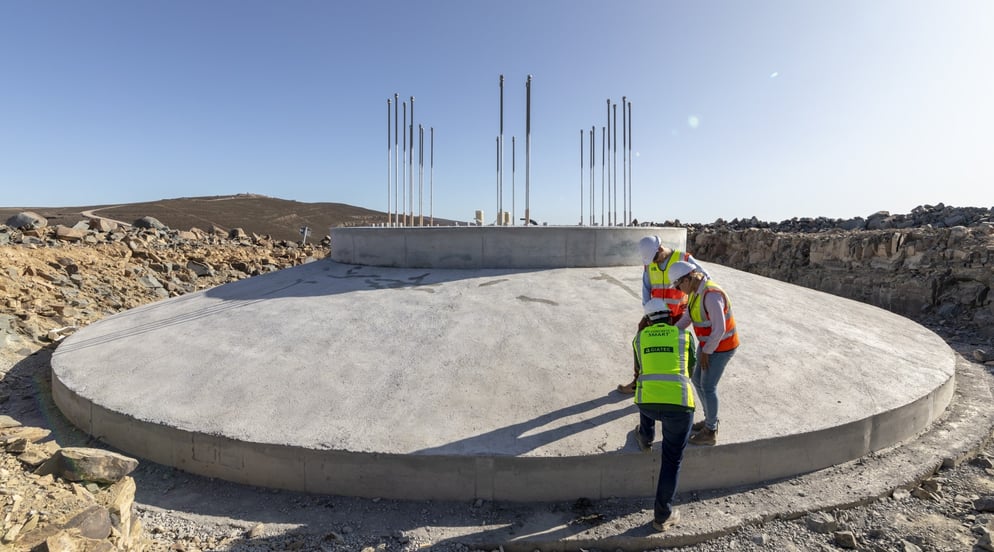Mass Concrete
This eBook is a complete guide to the principles and standards of mass concrete applications, offering engineers, project managers, general contractors, and testing labs the tools to complete their mass concrete projects.
Fill out the form to get your complimentary copy of the eBook by email!
What is Mass Concreting?
In recent years, the use of mass concrete elements has become more common. Typically, mass concrete has been associated with large structures, such as dams. However, other structures that use concrete with high cementitious content for high-early strength also constitute mass elements. As a result, mass concrete structures of various sizes and applications can be found in a multitude of applications, including mat foundations, piers, transfer beams, large foundation, and heavy civil structures, just to name a few.

Concord Windfarm Installation
Achieving a perfect, structurally sound mass concrete element requires substantial technical knowledge and experience in terms of design, placement, and monitoring. Mix design for mass concrete placements can vary widely, depending on the type of structure, the environment, and the resources available. From placement in harsh winter conditions to extreme heat, mass concrete poses many unique technical challenges that require following specific design and monitoring standards. Recent revisions to these standards and new technologies are also impacting the way mass concrete elements are designed and built.
What’s in This eBook
Mass Concrete – Governing Guidelines and Standards for Mass Concrete Applications provides readers with general technical information on mass concrete, first focusing on heat rise and explaining why higher temperatures may be observed in some concrete elements, and how to mitigate this issue with the proper selection of materials. Governing guidelines and standards about allowable maximum temperature and temperature differential limits are discussed extensively. This is followed by an overview of the different devices available for monitoring concrete, as well as tips and tricks to help with planning around your mass concrete application. Finally, the eBook concludes with a general guideline on how to create and implement a thermal control plan.
